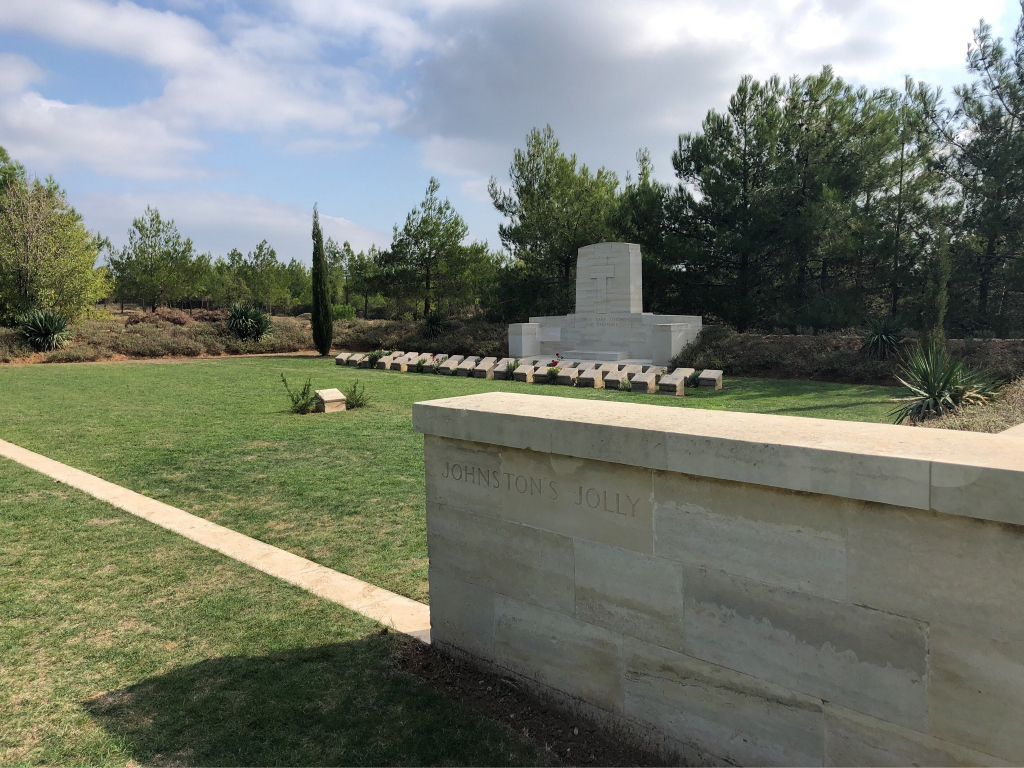Johnston's Jolly Cemetery
- Country Turkey (including Gallipoli)
- Total identified casualties 37 Find these casualties
- Identified casualties from First World War
- GPS Coordinates Latitude: 40.23269, Longitude: 26.28741
Location information
The Anzac and Suvla cemeteries are first signposted from the left hand junction of the Eceabat - Bigali road. From this junction you should travel into the main Anzac area. 400metres past Lone Pine Cemetery and Memorial you will find Johnston's Jolly. This cemetery stands on the northern part of Plateau 400 in the Anzac part of the peninsular.
Visiting information
The Cemetery is permanently open and may be visited at any time.
Please note that in the absence of a cemetery register, visitors are advised to locate the Grave/Memorial reference before visiting. This information can be found in the CASUALTY RECORDS within this page.
For further information and enquiries please contact enquiries@cwgc.org
History information
The Gallipoli campaign was mounted by Commonwealth and French forces in an attempt to force Turkey out of the war, to relieve the stalemate of the Western Front in France and Belgium, and to open a supply route to Russia through the Dardanelles and Black Sea.
Allied landings were made on 25-26 April 1915 at Helles, on the southern tip of the peninsula, and on the west coast, in an area which later became known as Anzac. On 6 August, further landings were made at Suvla, just north of Anzac, and the climax of the campaign came in early August when simultaneous assaults were launched on these three fronts.
Johnston's Jolly (called by the Turks Kirmezi Sirt, or 'Red Ridge'), was named from the commander of the 2nd Australian Division Artillery, Brigadier-General G J Johnston, CB, CMG, VD. The position was reached by the 2nd Australian Infantry Brigade on 25 April 1915, but lost the next day and it was never retaken.
The cemetery was made after the Armistice when graves were brought in from the battlefield.
There are now 181 Commonwealth servicemen buried or commemorated in this cemetery. 144 of the burials are unidentified and there are special memorials to 36 Australian casualties believed to be buried among them, almost all of whom were killed in the capture of Lone Pine in August 1915.


